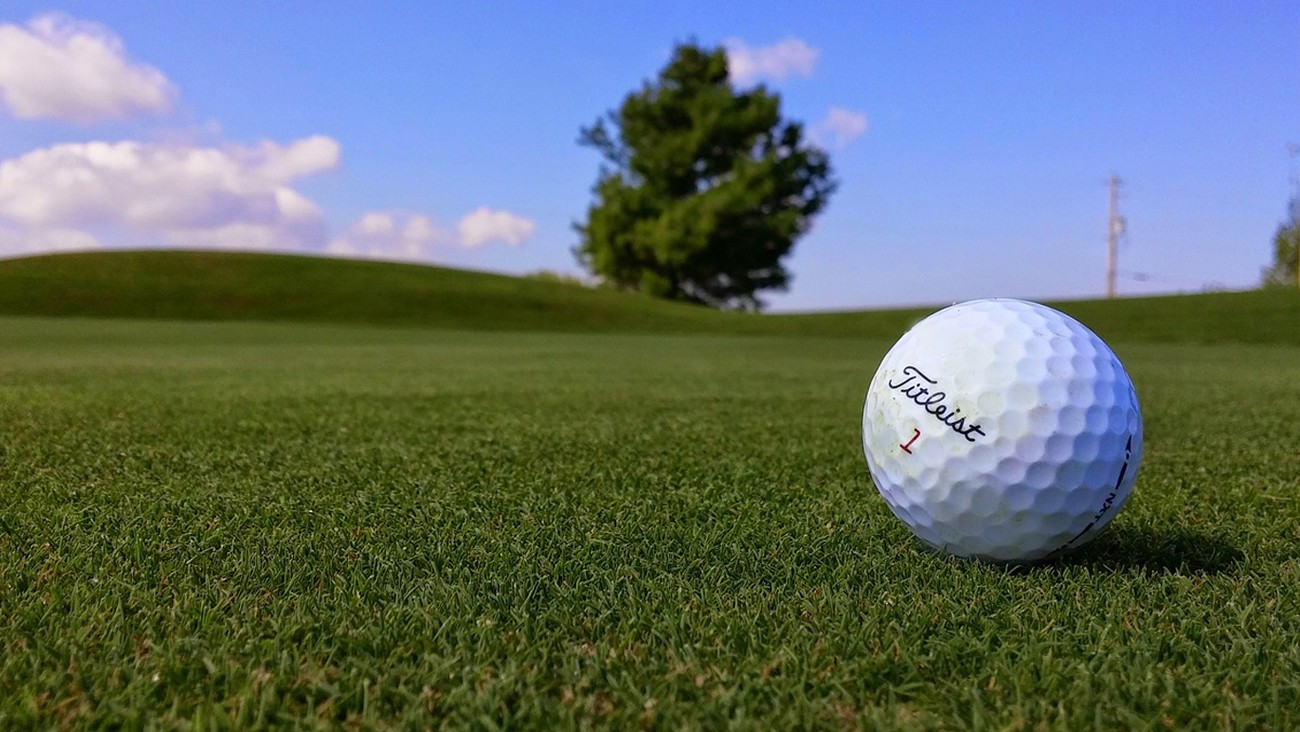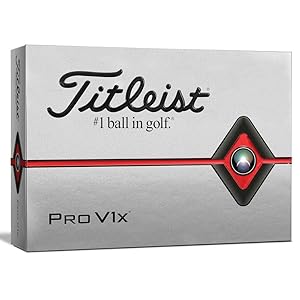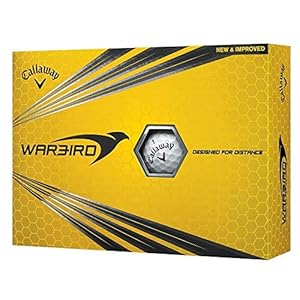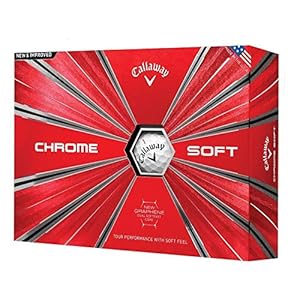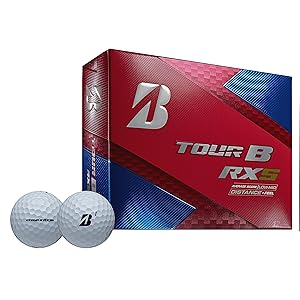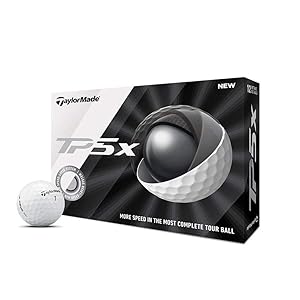With all the optional extras and accessories available these days in golf, it’s easy to forget playing the game boils down to having two pieces of equipment. The golf ball, which is perhaps the most fundamental piece of golf equipment and golf clubs which are a close second. With the very first balls being made from wood, technology has helped them come a long way since then. In this article, we take a look at some of the best golf balls available to date.
The Best Golf Balls
Whether you’re looking for something to improve your distance and consistency or increase your short game spin, the right golf ball is vital to helping you achieve this. In this section of the article we’ve rounded up some top quality golf balls that we’re sure you’re going to love.
Here’s a list of the 6 best golf balls around.
Titleist Pro V1 Golf Ball
For anyone who isn’t brand new to golf, as you might have suspected the Titleist Pro V1 sits at the very top of our list. This is a truly excellent ball, it feels really soft, has great distance and its mid-flight helps for stunning trajectories.
In terms of spin, it has very little spin when it comes to the long game, but for short game has plenty. The Pro V1 is a fantastic golf ball, it’s easy to see why PGA pros including the likes of Justin Thomas use it on tour.
Callaway Golf Chrome Soft Golf Ball
Next up we’ve got the Callaway Chrome ball, it aims to to deliver high ball speeds and low spin from longer clubs like the driver. Designed to provide tour performance, a soft feel and be highly forgiving. They have a straight ball flight and are made from Urethane.
These balls are a great option for those of you who want to reduce the risk of losing your ball as they also come in Yellow. These aim to give you excellent control over shots taken from the greenside. Overall, these are a top quality ball and one that anyone with the budget to should consider.
Bridgestone Golf Tour B RXS Golf Ball
Next up we’ve got the Tour B RXS from Bridgestone. This is a very forgiving ball, designed to improve the distances you hit. Modifications to the balls core and dimple pattern are what enhance the balls distance as well as trajectory. Seamless Cover Technology is used to help add consistency to the flight of the ball.
This ball has been designed for low to mid handicappers and is especially suited to those looking for more consistency between tee to green. Overall this is a brilliant golf ball and one that comes highly recommended.
Callaway Warbird Golf Ball
If you’re looking for an affordable golf ball designed for distance, the Warbird from Callaway is just what you’re looking for. It’s a highly forgiving ball with a moderate feel to it and is designed to fly straight.
Callaway uses HEX Aerodynamics to lower the amount of drag and to encourage higher launch, speed and distance. The ball is available in white and yellow, making them a great option for high-handicappers who want to reduce the chance of losing a ball.
Titleist Pro V1x Golf Ball
If you’re wondering why we’ve listed the Titleist Pro V1 twice, the V1x is actually a completely different golf ball. It isn’t as soft as the V1, but it flies higher it has more spin when it comes to irons and your short game. That said, it has the same low long game spin that the pro V1 has.
This is another excellent ball from Titelist and one that carries great distances with consistency. We’d recommend this if you’re looking for a top class golf ball that isn’t too soft and has a high ball flight.
TaylorMade TP5x Golf Ball
The TaylorMade TP5x is a golf ball that’s designed to perform well from the tee to the green. Using progressive compression to leverage maximum ball speeds it’s great off the tee.
It’s also great in and around the green with its dual-spin cover helping your club faces groove to combine perfectly with the ball. If you’re looking for a premium ball, that’s a solid all-rounder; we’d recommend trying the TP5x out for size.
A Guide to Buying Golf Balls

Golf is a game that requires great accuracy, as well as consistency. Pairing yourself up with a golf ball that’s designed to enhance these traits is a big help. Prices tend to vary for golf balls, often depending on their brand and quality.
If you’re new to golf, you might not care for the highest-priced balls, and rightly so, you’re likely to lose a lot of them. For highly-skilled players who lose balls far less often, a slightly pricier ball is a more sensible investment. In this section of the article we’ll be taking a look at some of the different kinds of golf balls.
Golf Ball Construction
The way golf balls are constructed plays a bit part in how they interact with your clubface. Let’s take a look at some of the most common constructions of golf balls.
One-Piece Golf Balls
If you’re a beginner, these are the balls you’ll probably have most interaction with. They are the least expensive balls to construct, and that’s down to the fact they’re the most basic. These are the types of ball you’ll find at your local driving range and are unlikely to be used out on the course.
The same material (surlyn) is used throughout, they’re a hard ball but also very durable. Ironically, despite being used on driving ranges, due to the lower compression, these balls don’t travel as far as multi-piece balls.
Two-Piece Golf Balls
These also usually have surlyn with a core made from a high energy material such as rubber or resin. This helps give your ball more distance than some other balls. Examples of two-piece balls include the likes of the Callaway Warbird which we looked at in our round-up.
Three-Piece Golf Balls
Three-piece balls are softer and will be able to produce more spin. Their makeup involves a solid rubber or liquid core, with another layer of enhanced rubber or liquid. The final layer is a more solid molded cover, with surlyn often used for this.
Four-Piece Golf Balls
This is where balls become a bit more complicated. Four-piece balls are great for distance as well as producing spin and a very soft feel. To achieve that, they rely on each of the layers to do a specialized job.
The layers working together consist of an inner core, usually made of rubber. There’s an inner cover which is used to transfer energy from the strike to the core. The middle cover helps to add an increase in distance with your driver while accommodating spin for mid-irons and around the green. The final layer made from Urethane helps to give the ball its soft feel.
Five-Piece Golf Balls
These have been around now for around a decade when they were introduced by TaylorMade with the Penta. These balls have similar benefits to those of three and four-piece balls. These consist of more layers and offer separation between them to allow for optimal distance as well as spin.
Here are a few examples of well-known balls and their classification.
| Ball | Layers |
| Callaway HEX Warbird | 2-Layer |
| Titleist Pro V1 | 3 Layer |
| Bridgestone TOUR B RXS | 3 Layer |
| Callaway Chrome Soft | 3 Layer |
| Titleist ProV1x | 4 Layer |
| Callaway Chrome Soft X | 4 Layer |
| TaylorMade TP5 X | 5 Layer |
Science Behind Golf Balls
Although golf balls seem a simple concept, there’s a lot more to them than first meets the eye. If you’re intrigued by the science behind golf balls we’ve written guides on how to spin golf balls, and why golf balls have dimples which we’d recommend reading.
Conclusion
Golf balls are one of the most crucial aspects of the game itself. If you choose a poor golf ball, you might find that you struggle with distance or spin. Playing with a good quality ball is a surefire way to ensure that if you face problems in these areas, the ball isn’t to blame. That said, we’d recommend new players start with one or two-piece balls. This is because they’re less expensive, which is something you consider if you’re likely to lose them.
